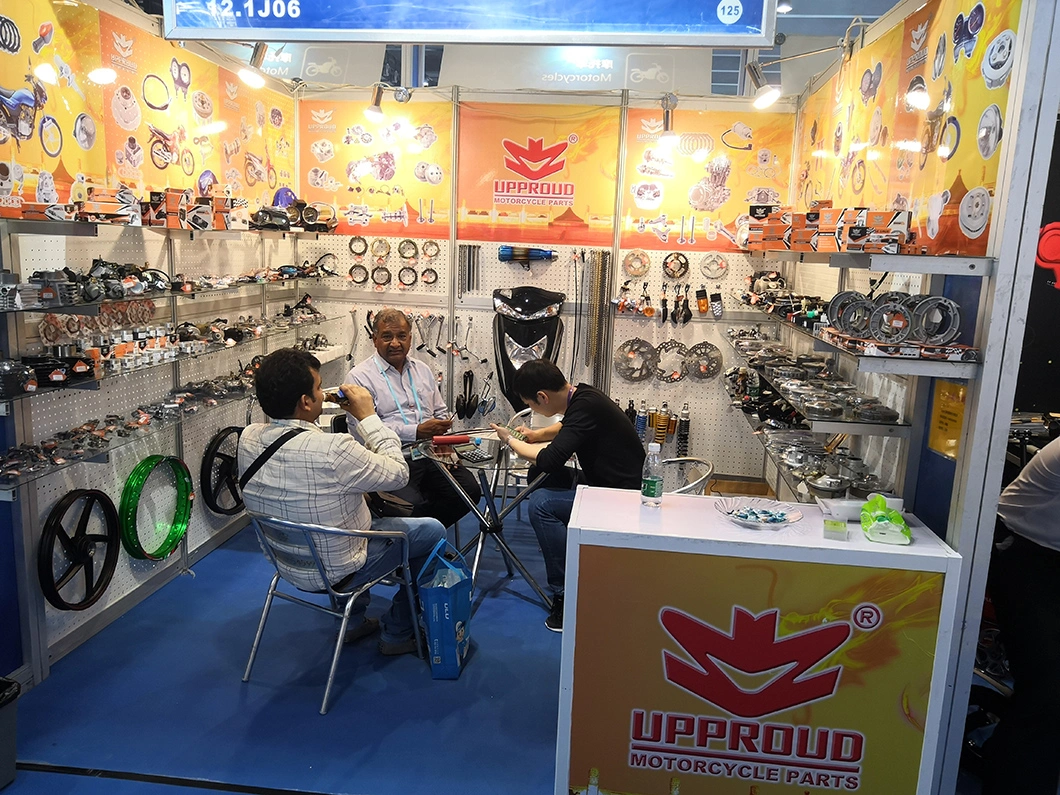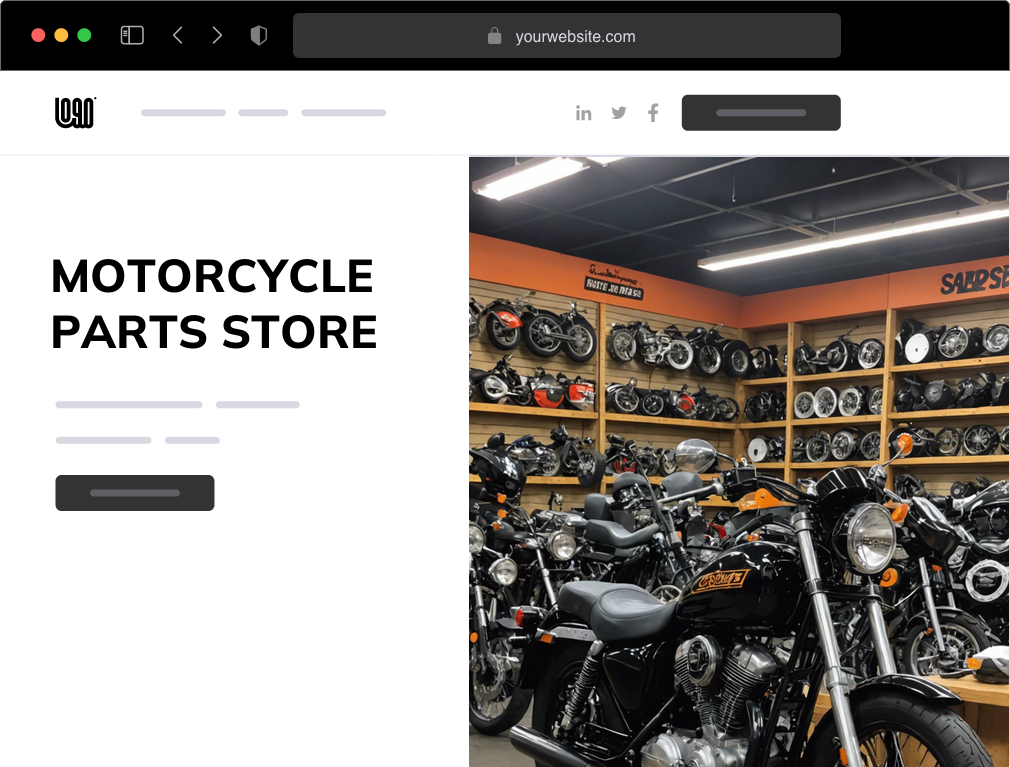Store the most effective MX Parts NZ for Your High-Performance Bike
Store the most effective MX Parts NZ for Your High-Performance Bike
Blog Article
Understanding the Essential Parts of a Motorbike: A Comprehensive Overview for Fanatics
For bike fanatics looking to elevate their riding experience and guarantee their bikes run efficiently, understanding the vital elements of a motorcycle is vital. Each aspect, from the engine's elaborate workings to the vital function of the stopping devices, not only influences efficiency but likewise security and convenience.
Engine Elements

The camshaft plays a crucial duty in regulating the timing of the engine's valves, making sure the exact opening and closing needed for reliable gas and air intake, as well as exhaust expulsion. This timing is essential to maintaining optimum engine efficiency and effectiveness. Additionally, the carburetor or gas shot system, depending upon the motorcycle version, is in charge of blending air with fuel in the appropriate ratio for burning.
The air conditioning system, either air or liquid-based, works to keep the engine's temperature level within functional limits, protecting against getting too hot and guaranteeing longevity - motorcycle parts nz. Each element, meticulously created and incorporated, adds to the smooth procedure of the engine, specifying the motorbike's power result and general performance
Transmission System
Indispensable to the bike's capability, the transmission system ensures reliable power transfer from the engine to the wheels. This system comprises numerous vital components, including the clutch, gearbox, and final drive, each playing a crucial function in translating the engine's power into motion. The clutch, usually run by a hand bar, offers to disengage the engine and engage from the transmission, enabling smooth equipment changes and regulated acceleration.
The gearbox, typically referred to as the transmission proper, contains a set of equipments that cyclists can by hand change with to change the bike's rate and torque outcome. These equipments are arranged in a sequence that makes it possible for the motorcycle to speed up efficiently and keep ideal engine efficiency across different speeds. Many bikes make use of a consecutive gearbox, calling for the rider to shift equipments in an established order.
Braking Systems
While understanding the transmission system is crucial to harnessing a motorcycle's power, similarly important is the capacity to regulate and stop that power properly, which is where stopping devices enter play. Brakes are crucial for security and performance, supplying the cyclist with the necessary control to navigate different surfaces and problems. Typically, bikes feature two kinds of braking systems: disc brakes and drum brakes.
Disc brakes are extra widespread in modern-day bikes due to their exceptional efficiency. This system provides much better warm dissipation, regular efficiency, and improved stopping power, specifically in wet conditions.
Alternatively, drum brakes, though less typical, are still located in some bikes. They function by pressing brake shoes against the internal surface of a drum connected to the wheel. While generally much less look what i found reliable in heat dissipation and quiting power, drum brakes are simpler and much more economical.
Comprehending these stopping systems' nuances enables riders to preserve their motorcycles effectively and value the engineering that makes sure risk-free and reliable stopping.
Suspension and Guiding
Suspension and guiding systems are essential elements that considerably influence a motorcycle's handling and ride comfort. The shock absorber, containing forks at the front and shock absorbers at the back, soaks up roadway abnormalities, enhancing stability and control. Front forks, commonly telescopic or inverted, compress and rebound to minimize effects, while back shock absorbers preserve tire contact with the roadway, essential for traction and safety and security.
Steering, centered around the handlebars, connects the rider to the motorbike's directional control. The steering head bearings ensure smooth operation, permitting specific maneuverability. Appropriate positioning and maintenance of these bearings are critical for foreseeable guiding reaction and decreasing cyclist tiredness.
The suspension's adjustability is one more important facet; preload, open face helmet damping, and rebound settings enable modification to suit different riding styles and conditions. This flexibility is vital for enhancing efficiency, whether browsing urban streets or taking on sturdy routes. Technologies like digital shock absorber use real-time adjustments, enhancing trip high quality across diverse terrains.

Electric Systems
After ensuring a controlled and smooth trip via effective suspension and guiding systems, attention transforms to the electric systems, a pivotal aspect of modern-day bikes. These systems play a crucial role not only in starting the engine but additionally in powering numerous components that boost the functionality and security of the bike.
At the heart of a motorcycle's electrical system is the battery, which shops electric energy required for beginning the engine and powering complementary systems - mx parts nz. The generator or generator, combined with the rectifier-regulator, guarantees the battery stays charged while the motorbike is in procedure, transforming power into electrical power and maintaining voltage degrees
The ignition system, another essential element, is in charge of stiring up the air-fuel mixture in the engine's cyndrical tubes. Modern motorbikes usually utilize a digital ignition system, using greater efficiency and dependability contrasted to standard systems.
Lighting systems, consisting of fronts lights, tail lights, and indications, are also essential, guaranteeing visibility and safety and security for the motorcyclist. Additional electronic components such as sensing units, control systems, and displays add to advanced functions like fuel injection management, anti-lock stopping systems (ABDOMINAL), and electronic dashboards, further enhancing the riding experience.
Conclusion
An extensive understanding of a bike's vital components, consisting of the engine, transmission system, braking mechanisms, suspension, steering, and electrical systems, is crucial for enthusiasts aiming to maximize comfort, security, and efficiency. Proficiency of these elements enables notified decisions relating to maintenance and upgrades, inevitably boosting the riding experience. By incorporating this expertise, cyclists can ensure their bikes run at peak performance and dependability, thus taking full advantage of both enjoyment and durability of their cars.
For motorbike enthusiasts looking to boost their riding experience and guarantee their bikes run efficiently, comprehending the essential components of a bike is vital.Essential to the bike's capability, the transmission system ensures efficient power transfer from the engine to the wheels.While comprehending the transmission system is vital to utilizing a bike's power, just as crucial is the ability to manage and stop that power properly, which is where stopping systems come into play. Typically, bikes include two types of stopping systems: disc brakes and drum brakes.
An extensive understanding of a motorcycle's vital elements, consisting of the engine, transmission system, braking systems, suspension, steering, and motorcycle helmets near me electric systems, is important for lovers aiming to maximize performance, safety and security, and comfort.
Report this page